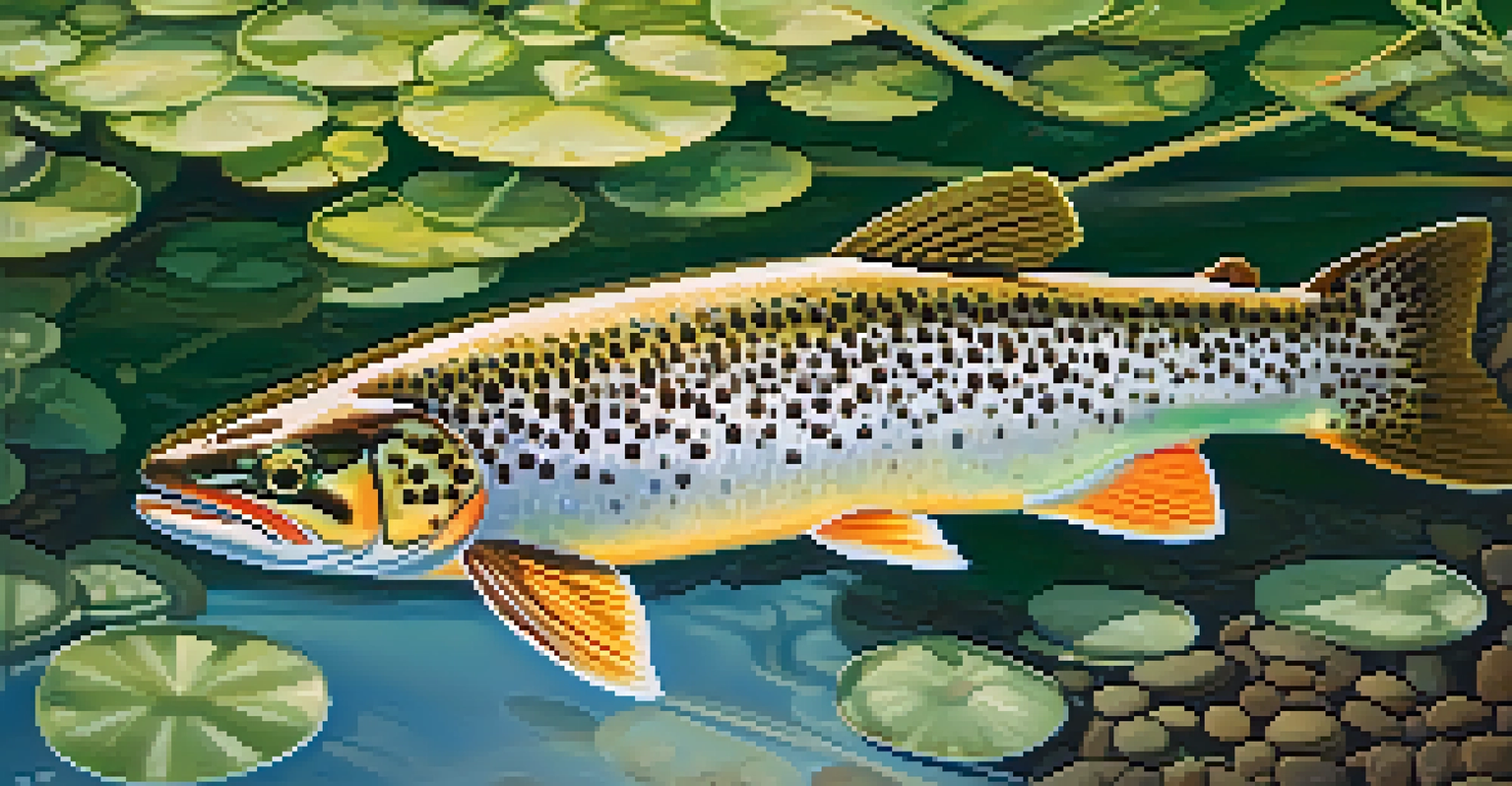Climate Variability in Colorado: Affects on Wildlife and Habitats

Understanding Climate Variability in Colorado
Climate variability refers to the fluctuations in weather patterns over time, which can be particularly pronounced in regions like Colorado. Factors such as temperature changes, precipitation shifts, and extreme weather events all contribute to this variability. In Colorado, where the landscape ranges from arid plains to high alpine environments, the effects can vary widely depending on the region.
The climate crisis is not a challenge for the future; it is a challenge for today. We must act now to protect our ecosystems and the wildlife that rely on them.
For instance, areas in the mountains may experience more snow in the winter, while lower elevations could see more droughts. This disparity can lead to challenges for both wildlife and the ecosystems they inhabit. As these weather patterns change, understanding the nuances of climate variability becomes crucial for conservation efforts.
Moreover, local communities and wildlife alike must adapt to these changes, making it essential to monitor climate trends. By recognizing the specific shifts occurring in Colorado, we can better prepare for their impacts on both the environment and its inhabitants.
Impact on Wildlife: Migration Patterns
Wildlife in Colorado has adapted to specific seasonal patterns, including migration and breeding. However, as climate variability alters temperatures and food availability, these patterns are disrupted. For example, some bird species may arrive at their breeding grounds earlier than usual due to warmer spring temperatures, which can lead to mismatches in food supply.

Furthermore, species that rely on specific habitats may find those environments shifting or disappearing altogether. As ecosystems change, animals may be forced to move to new areas in search of suitable conditions, which can lead to increased competition and stress. This shift not only affects the animals but also the ecological balance of their native habitats.
Climate Variability Affects Wildlife
Changes in weather patterns disrupt migration and breeding habits of wildlife in Colorado.
Understanding these migration changes is vital to wildlife conservation efforts. By tracking these shifts, researchers can develop strategies to protect vulnerable species and ensure their survival in a changing climate.
Effects on Habitats: Altered Ecosystems
The ecosystems in Colorado are intricately connected, meaning that changes in one area can have a ripple effect on others. Climate variability can lead to alterations in vegetation types, which in turn affects the wildlife that depends on those plants for food and shelter. For instance, warmer temperatures may cause certain tree species to migrate to higher altitudes, affecting the habitats of birds and mammals.
We cannot solve our problems with the same thinking we used when we created them. It's time to rethink our approach to conservation in the face of climate variability.
In addition, extreme weather events such as wildfires or floods can drastically reshape landscapes. These events can destroy habitats, disrupt food sources, and force wildlife to adapt quickly to survive. Over time, these changes can lead to a decline in biodiversity, as some species may not be able to cope with the rapid shifts.
By studying these habitat changes, conservationists can better understand the challenges faced by wildlife. This knowledge is essential for developing effective strategies to protect and restore ecosystems that are vital for the survival of various species.
Impact on Aquatic Life: Water Temperature Changes
Colorado's rivers and streams are not only vital for human use but also serve as habitats for countless aquatic species. As temperatures rise due to climate variability, water temperatures in these bodies of water can increase, which can have dire consequences for fish and other aquatic life. Warmer waters can reduce oxygen levels, making it difficult for species like trout to thrive.
Moreover, changes in precipitation patterns can lead to altered flow rates, which can impact spawning grounds and the overall health of aquatic ecosystems. For example, decreased snowpack can lead to lower river flows in summer, affecting the habitats of fish and amphibians that rely on stable water conditions.
Ecosystems Face Altered Habitats
Climate variability leads to shifts in vegetation and extreme weather, impacting the delicate balance of ecosystems.
To mitigate these impacts, it's crucial to monitor water quality and temperature. By understanding how climate variability affects aquatic habitats, we can implement conservation measures to protect these essential ecosystems and the wildlife that depend on them.
The Role of Vegetation in Climate Adaptation
Vegetation plays a critical role in supporting wildlife and stabilizing ecosystems, but it is also vulnerable to climate variability. As temperatures rise and precipitation patterns shift, plant species may struggle to adapt, altering the landscapes we see today. For example, native grasses and wildflowers may be replaced by more drought-resistant species, changing the food sources available for herbivores.
These shifts can create a cascade of effects throughout the food chain. Herbivores that depend on specific plants may find themselves with limited resources, leading to declines in their populations. This, in turn, affects the predators that rely on those herbivores for food, further impacting the ecological balance.
Preserving diverse plant communities can help ecosystems remain resilient to climate changes. By promoting native vegetation and understanding its role in habitat stability, conservation efforts can better support wildlife adaptation to a changing climate.
Human Influence on Wildlife and Habitats
Human activities such as urban development, agriculture, and resource extraction significantly impact wildlife and their habitats in Colorado. As land is altered for human use, natural ecosystems are fragmented, making it difficult for wildlife to find food, shelter, and mates. This habitat loss often exacerbates the challenges posed by climate variability.
Additionally, pollution from agriculture and urban areas can further stress ecosystems, affecting water quality and soil health. These factors can lead to a decline in biodiversity, as species that cannot adapt to these changes may face extinction. The interaction between climate variability and human influence creates a complex web of challenges for wildlife.
Human Activities Impact Conservation
Urban development and pollution exacerbate challenges for wildlife, making effective conservation strategies essential.
Addressing these issues requires a collaborative approach that includes sustainable land-use practices, habitat restoration, and conservation efforts. By recognizing the impact of human activity, we can create strategies to mitigate these effects and support healthier ecosystems.
Conservation Strategies for a Changing Climate
As climate variability continues to pose challenges for wildlife and habitats in Colorado, proactive conservation strategies become increasingly important. These strategies may include habitat restoration, establishing wildlife corridors, and implementing sustainable land-use practices. By restoring degraded habitats, we can provide a refuge for wildlife struggling to adapt to changing conditions.
Additionally, creating wildlife corridors can help connect fragmented habitats, allowing species to migrate and find suitable environments. This connectivity is crucial for maintaining genetic diversity and overall ecosystem health. Furthermore, engaging local communities in conservation efforts can foster a sense of stewardship and promote sustainable practices.

Ultimately, a comprehensive approach that combines science, community involvement, and policy changes will be necessary to protect Colorado's unique wildlife and habitats. By investing in these strategies, we can help ensure a resilient environment for future generations.